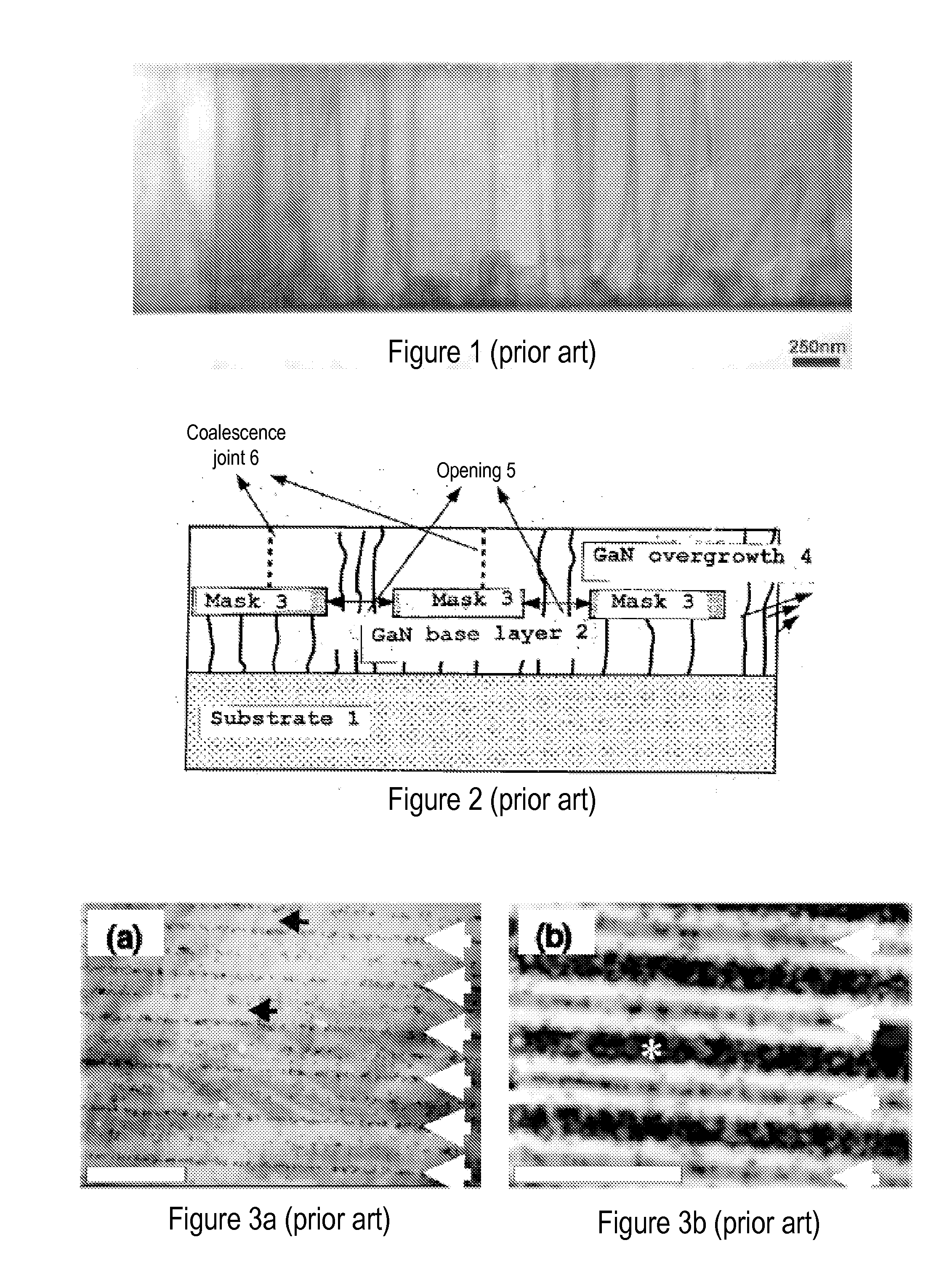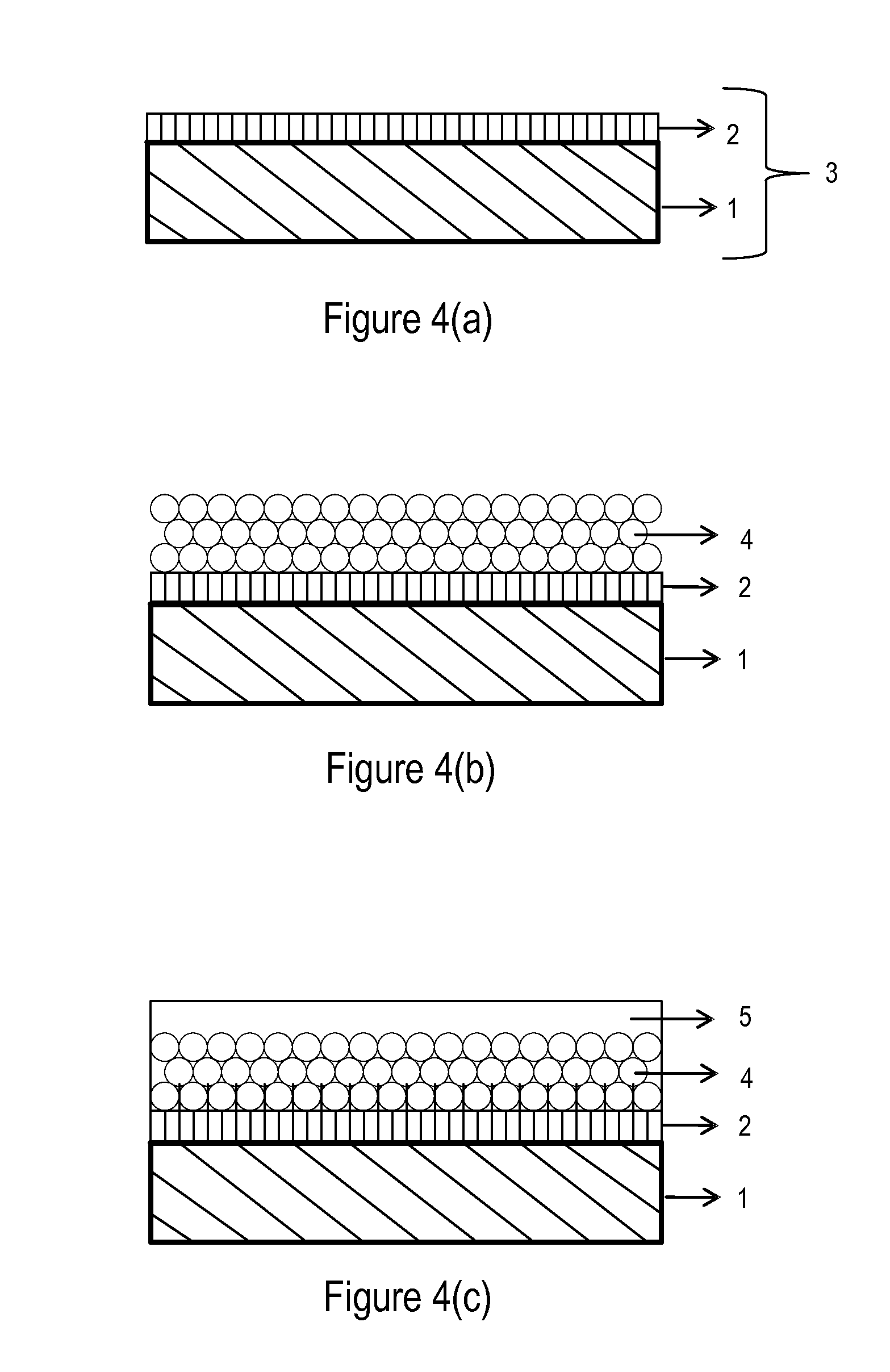Ultra-Low Dislocation Density Group III - Nitride Semiconductor Substrates Grown Via Nano- Or Micro-Particle Film
a technology of nitride and semiconductor substrates, which is applied in the direction of polycrystalline material growth, crystal growth process, chemically reactive gas, etc., can solve the problems of easy influence of growth layer, easy to match low lattice constant to substrate crystal lattice constant, and accumulate elastic bending energy
- Summary
- Abstract
- Description
- Claims
- Application Information
AI Technical Summary
Problems solved by technology
Method used
Image
Examples
Embodiment Construction
[0027]Objectives and advantages of the invention may be obvious from the foregoing description, will be set forth in part in the description that follows, or may be learned by practice of the invention. It is to be understood that both the foregoing description and the following description are exemplary and explanatory only and are not restrictive of the invention, as claimed. The objectives and advantages of the invention will be realized and attained by means of the elements and combinations particularly pointed out in the appended claims. Various embodiments may achieve some, all or none of the following objectives.
[0028]One desirable objective is to provide an ultra low defect or dislocation density Group III-Nitride semiconductor crystal in which the strain with the starting substrate is more relaxed and crystal defect or dislocation density is lower than conventional methods, and having characteristics that are generally uniform across the surface of the substrate. The growth...
PUM
 Login to View More
Login to View More Abstract
Description
Claims
Application Information
 Login to View More
Login to View More - R&D
- Intellectual Property
- Life Sciences
- Materials
- Tech Scout
- Unparalleled Data Quality
- Higher Quality Content
- 60% Fewer Hallucinations
Browse by: Latest US Patents, China's latest patents, Technical Efficacy Thesaurus, Application Domain, Technology Topic, Popular Technical Reports.
© 2025 PatSnap. All rights reserved.Legal|Privacy policy|Modern Slavery Act Transparency Statement|Sitemap|About US| Contact US: help@patsnap.com



